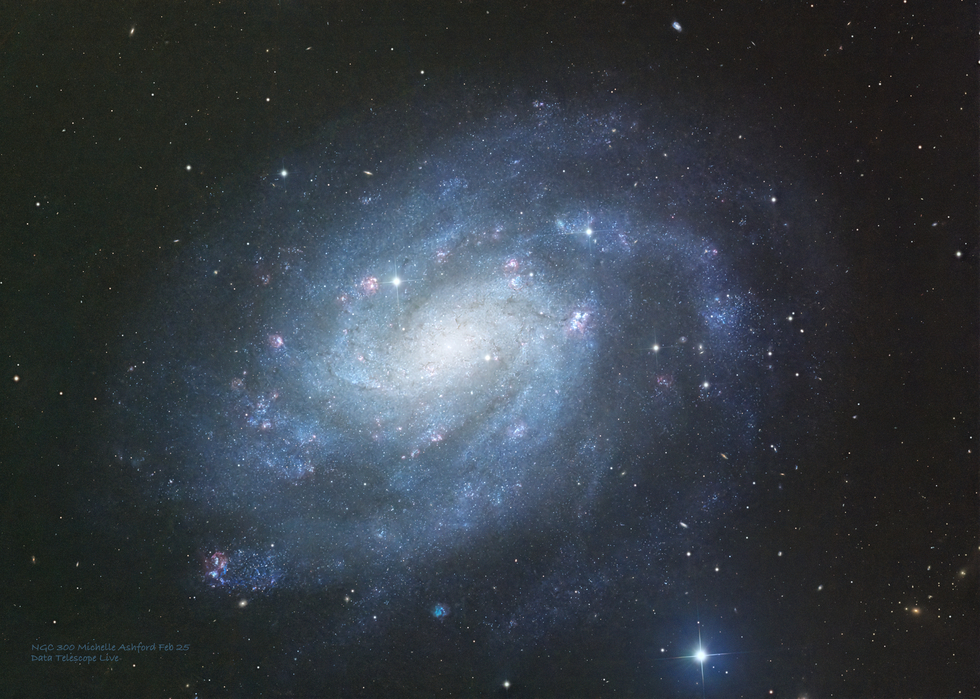NGC 300
NGC 300
NGC 300 is a spiral galaxy, very similar to our own Milky Way, around 6.07 million light-years away from Earth in the southern constellation of Sculptor. It is about 47 thousand light-years across, but space probe Gemini was able to resolve faint stars 47,000 light-years from the galaxy core, giving the galaxy a diameter of at least 94,000 light-years.
It is one of the closest galaxies to the Local Group, and probably lies between us and the Sculptor Group, a nearby group of 13 galaxies. NGC 300 and the irregular galaxy NGC 55 are only a million or so light-years apart, and probably form a gravitationally bound pair. Until recently, they were considered members of the Sculptor Group, but are now known to be foreground galaxies.
NGC 300 is a relatively diffuse spiral galaxy with a poorly defined core. Young hot blue stars dominate the outer spiral arms of the galaxy, while the older stars congregate in the inner regions. The stars in the faint outer regions of NGC 300 are the dying remnants of an ancient stellar population. When the galaxy was young, and the outer regions were still actively forming stars, the outer parts of the galaxy were just as bright as the modern core.
Besides millions of individual stars, clusters of stars and nebulae, NGC 300 also contains a huge cloud of ionised hydrogen (a “HII shell”). This star-forming region measures about 2,000 light-years in diameter, dwarfing even the enormous Tarantula Nebula in the Large Magellanic Cloud.
It is one of the closest galaxies to the Local Group, and probably lies between us and the Sculptor Group, a nearby group of 13 galaxies. NGC 300 and the irregular galaxy NGC 55 are only a million or so light-years apart, and probably form a gravitationally bound pair. Until recently, they were considered members of the Sculptor Group, but are now known to be foreground galaxies.
NGC 300 is a relatively diffuse spiral galaxy with a poorly defined core. Young hot blue stars dominate the outer spiral arms of the galaxy, while the older stars congregate in the inner regions. The stars in the faint outer regions of NGC 300 are the dying remnants of an ancient stellar population. When the galaxy was young, and the outer regions were still actively forming stars, the outer parts of the galaxy were just as bright as the modern core.
Besides millions of individual stars, clusters of stars and nebulae, NGC 300 also contains a huge cloud of ionised hydrogen (a “HII shell”). This star-forming region measures about 2,000 light-years in diameter, dwarfing even the enormous Tarantula Nebula in the Large Magellanic Cloud.
SPECIFICATIONS
Telescope
CHI-1 Planewave CDK24
Camera
QHY 600M
Location
Chile
Date of observation
6 Datasets June-July 2024
Filters
LRGB
Processing
Pixinsight, Blur Exterminator, Affinity, Star Exterminator, Topaz De-Noise/Sharpen


